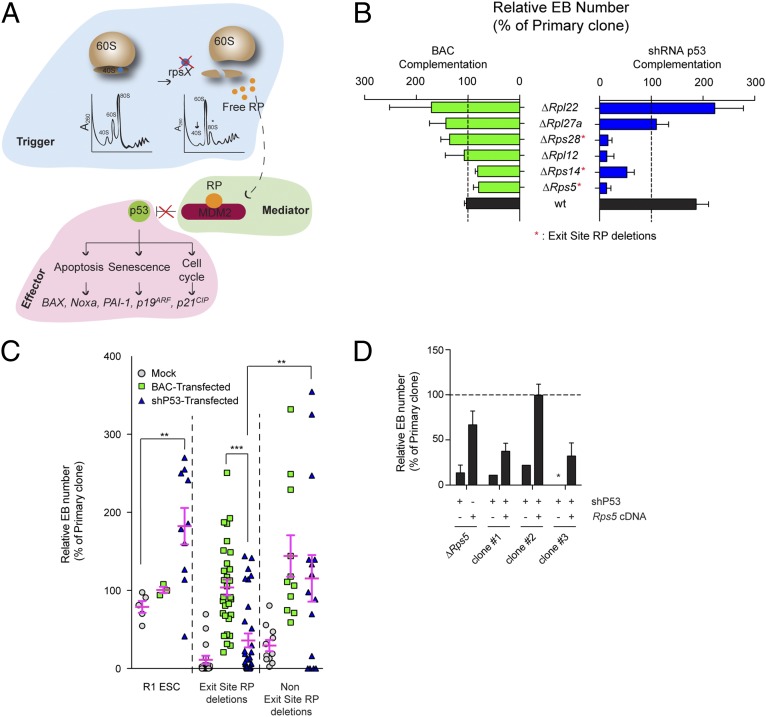Fig. 4.
p53-independent role of exit-site–specific RP deletions in EB formation. (A) Schematic representation of ribosomal (nucleolar) stress pathway. An RP imbalance can lead to the formation of specific RP–Mdm2 complexes, resulting in p53 stabilization and downstream signaling. (B) Relative EB numbers (expressed as a percentage of primary clone numbers) following BAC or shRNA p53 transfection. Results from clones in which BAC complementation was at least 50% are shown. See Fig. S4D for results of all clones. Error bars show the SEM of at least two (BAC transfections) or four (shp53 transfections) independent experiments performed in duplicate. (C) Comparison of BAC vs. shRNA p53 complementation in wild-type R1 ESCs, exit-site–specific deletions (n = 3 clones), and other RP deletions (n = 3 clones). An shRNA to luciferase has been used in mock conditions. Pink bars represent mean values ± SEM. p53 knockdown levels can be found in Fig. S4 B and C. (D) Reintroduction of Rps5 cDNA following unsuccessful shRNA p53 rescue experiments. Three clones refractory for shRNA p53 complementation were subsequently transfected with the Rps5 cDNA to test for EB-formation capability and p53 independency. Error bars show the SEM of at least two independent experiments performed in duplicate.

